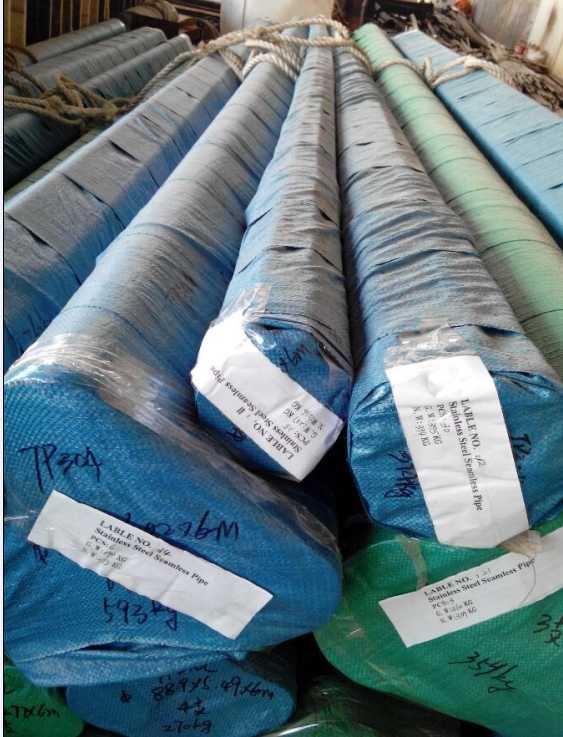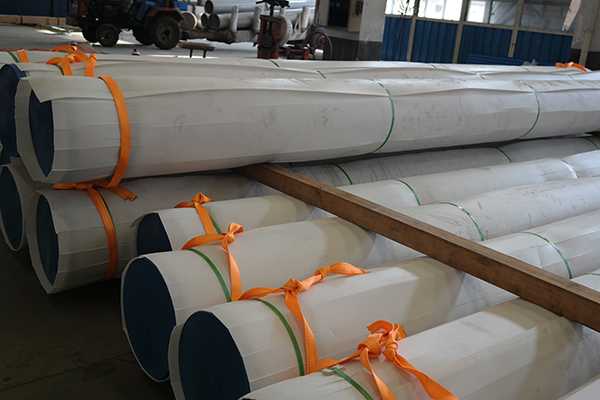

2023-08-01
There are several grades of stainless steel available, each with a distinct set of features and properties. 304 and 300 stainless steel are two popular varieties that are sometimes used interchangeably but have significant distinctions that are tailored to particular pur poses. We will go into the Differences Between various stainless steel grades in this extensive post, looking at their chemical makes up, mechanical characteristics, uses, and more.
Iron, chromium, and carbon make up the majority of the alloy that makes up stainless steel, with other constituents enhancing its qualities. Both stainless steels 304 and 300 are members of the austenitic family, which is recognized for its superior Corrosion resistance and adaptability. The difference between them, though, is in their chemical make-up.

304 stainless steel, also known as A2 stainless steel (according to ISO standards), contains:
Chromium: 18-20%
Nickel: 8-10.5%
Carbon: 0.08%
Manganese: 2%
Silicon: 0.75%
Phosphorus: 0.045%
Sulfur: 0.03%
Iron: Balance
300 series stainless steel includes various grades such as 301, 302, 303, 305, 316, and others. Each grade has slight differences in its chemical composition. For instance:
Chromium: 16-18%
Nickel: 6-8%
Carbon: 0.15%
Manganese: 2%
Silicon: 0.75%
Phosphorus: 0.045%
Sulfur: 0.03%
Iron: Balance
Chromium: 17-19%
Nickel: 8-10%
Carbon: 0.15%
Manganese: 2%
Silicon: 0.75%
Phosphorus: 0.045%
Sulfur: 0.03%
Iron: Balance
Chromium: 17-19%
Nickel: 8-10%
Carbon: 0.15%
Manganese: 2%
Silicon: 0.75%
Phosphorus: 0.2%
Sulfur: 0.15%
Iron: Balance
Chromium: 17-19%
Nickel: 10.5-13%
Carbon: 0.12%
Manganese: 2%
Silicon: 0.75%
Phosphorus: 0.045%
Sulfur: 0.03%
Chromium: 16-18%
Nickel: 10-14%
Carbon: 0.08%
Manganese: 2%
Silicon: 0.75%
Phosphorus: 0.045%
Sulfur: 0.03%
Iron: Balance
The differences in chemical compositions lead to distinct mechanical properties between 304 and 300 stainless steel.
Due to its excellent tensile strength, 304 stainless steel is appropriate for a variety of structural applications. It is perfect for use in tough environments and applications involving exposure to chemicals since it has great corrosion and oxidation resistance.
The strength of 300 series stainless steel varies depending on the specific grade. For instance:
Spring and fastener applications benefit from the excellent strength and work-hardening properties of 301 stainless steel.
Applications involving wire forms and springs frequently use 302 stainless steel because of its strong resistance to corrosion.
Since it can be machined easily, 303 stainless steel is ideal for applications that call for a lot of machining.
The choice between 304 and 300 stainless steel depends on the specific application requirements, including environmental conditions, temperature, and mechanical stress.
304 stainless steel finds its application in various industries, including:
Food and Beverage: Due to its resistance to corrosion, 304 stainless steel is commonly used in kitchen appliances, storage containers, and equipment for food processing.
Architecture: Due to its aesthetically pleasing nature and weather endurance, it is frequently used for exterior facades, roofing, and ornamental elements.
Medical and Pharmaceutical: Non-reactive characteristics with body fluids are essential in medical implants and equipment.
Chemical and Petrochemical: For storage tanks and pipelines handling corrosive chemicals.
Different grades within the 300 series have their specific applications:
301 stainless steel: Used in springs, clips, and fasteners for its high strength and durability.
302 stainless steel: Valves, surgical instruments, and marine hardware due to its corrosion resistance.
303 stainless steel: Machined components and fittings due to their excellent machinability.
Corrosion Resistance: How do 304 and 300 Stainless Steel Compare?
It is appropriate for applications where exposure to moisture or corrosive materials is frequent because 304 stainless steel has outstanding corrosion resistance. A passive oxide layer created by the chromium in the material shields the steel from corrosion.
The grade impacts how resistant to corrosion stainless steel from the 300 series is. In general, they are good at resisting corrosion, though not as well as 304 stainless steel. Despite this, they are nonetheless appropriate for a wide range of applications, particularly those that prioritise cost effectiveness and specialty mechanical features.
It is simple to mould and build a variety of structures out of 304 stainless steel due to its great formability, and it is also very weldable. It is often used in welding activities, such as joining components in the building and automobile industries.
Each grade of 300 series stainless steel has a different weldability. While some grades can be welded without much difficulty, others might need preheating and post-weld annealing to prevent cracking and guarantee the best results.
When 304 stainless steel is annealed, it is not magnetic. However, following cold working or welding, it could become slightly magnetic even though it still has great corrosion resistance.
In its annealed state, 300 series stainless steel, which includes 302, 303, and 304, is typically non-magnetic. Due to the austenitic microstructure, which lacks the magnetic characteristics of ferritic or martensitic stainless steel grades, this property exists. Since 300 stainless steel is non-magnetic, it is perfect for applications where magnetism can impair the functionality of delicate machinery or electronics.
The mechanical qualities of 304 stainless steel are retained even at high temperatures thanks to its good heat resistance. It is useful for high-temperature applications like heat exchangers and exhaust systems since it can resist temperatures of up to 1700°F (927°C) without significantly losing strength.
Stainless steel from the 300 series also resists heat well, however the maximum operating temperature depends on the particular grade. For instance, 303 stainless steel may perform less well at higher temperatures due to carbide precipitation due to its reduced carbon content. When choosing the right grade, it is crucial to take the intended application and the temperature environment into account.
As a result of its popularity and extensive use, 304 stainless steel is more readily available on the market. Due to its availability and required characteristics, it is economically priced when compared to other stainless steel grades.
Depending on the precise grade and availability, the cost of 300 series stainless steel might change dramatically. Due to the higher nickel and molybdenum content in grades like 316, which contributes to improved corrosion resistance, some grades in this series may be more expensive.
Due to its capacity to be recycled, 304 stainless steel is very environmentally friendly and sustainable. Since stainless steel is a durable material that can be recycled endlessly without losing any quality, it is a sustainable option for many businesses.
Similar to type 304 stainless steel, 300 series stainless steel is recyclable and sustainable. Choosing stainless steel items reduces the production of waste and the need for fresh raw resources.

Yes, 304 stainless steel has exceptional corrosion resistance, which makes it a popular choice for outdoor applications like architectural elements, maritime equipment, and industrial buildings.
Due to its greater corrosion resistance, Grade 316 stainless steel—which has a higher nickel and molybdenum content—is the best option for high-temperature applications.
Most of the time, welding 304 stainless steel doesn't present any major problems. To achieve the greatest outcomes, it is imperative to employ suitable welding processes and, if necessary, post-weld annealing.
The 300 series stainless steel, including 304, 302, and 303, is typically non-magnetic in its annealed state.
Take into account elements like the application environment, necessary mechanical features, and financial restrictions. 304 stainless steel is a flexible and affordable solution, and various grades from the 300 series provide special benefits for particular applications.
Because of its resistance to corrosion and lack of food reactivity, stainless steel in the 304 and 300 series is both safe for contact with food and frequently utilised in the food processing sector.
In conclusion, For making knowledgeable judgements in a variety of industries, it is crucial to comprehend the distinction between 304 and 300 stainless steel. Even though 304 stainless steel is adaptable, corrosion-proof, and readily accessible, the 300 series offers various grades, each of which is designed for a particular application. You can select the most appropriate stainless steel grade for your particular demands by taking into account the mechanical qualities, corrosion resistance, heat resistance, and cost considerations.
Keep in mind that the type of stainless steel you choose can have a big impact on how well your goods and constructions function and last. Choosing the proper stainless steel grade ensures optimum performance and long-term satisfaction, whether it be for industrial gear, food processing equipment, medical equipment or building construction.